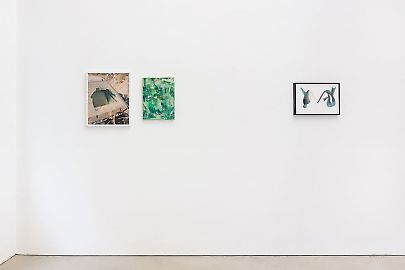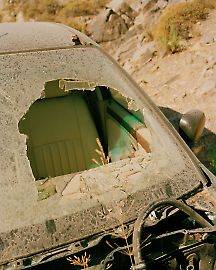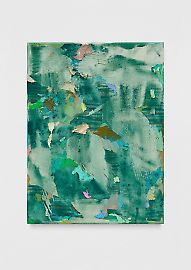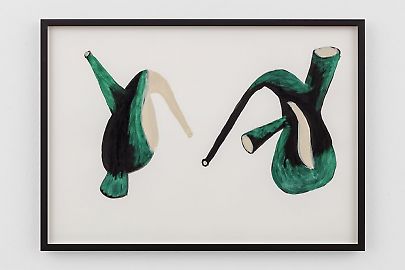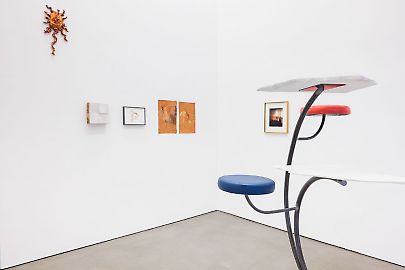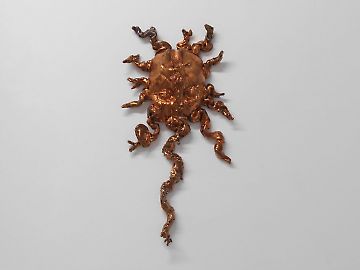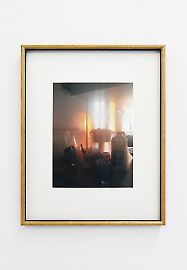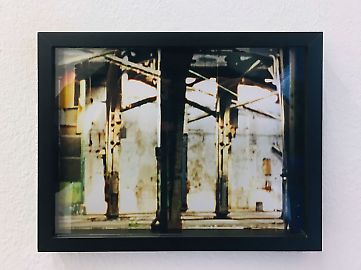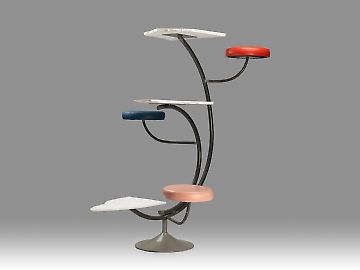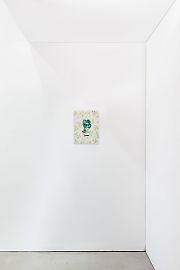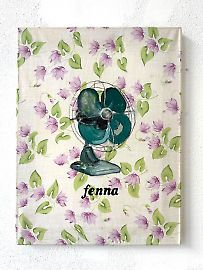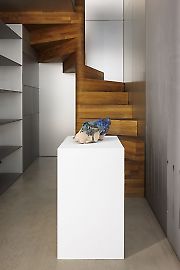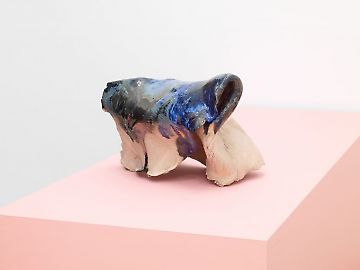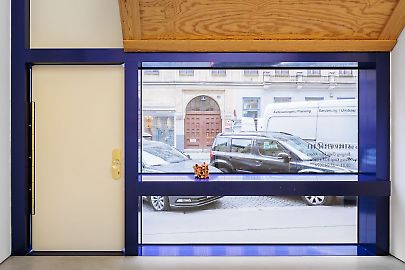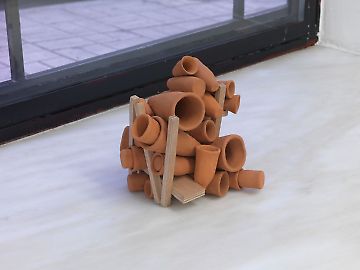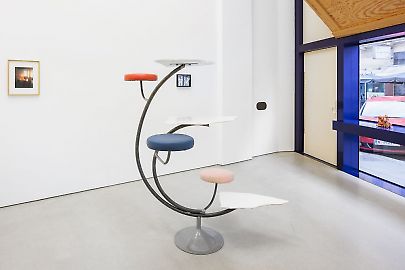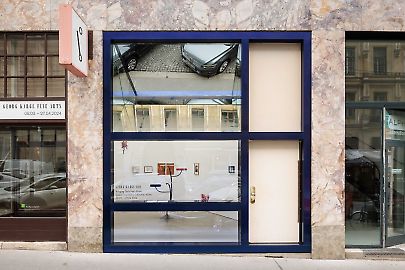Bringing Owls from Athens -- Georg Kargl BOX x Callirrhoë, Athens
Finissage: May 11, 2024, 12.00-18.00
Valentina Bartolini, Mladen Bizumic, Nicole Economides, Vasilis Papageorgiou, Malvina Papagiotidi, Rosa Rendl, Camila Sposati, Yorgos Stamkopoulos, Valinia Svoronou, Nikolas Ventourakis, Kostis Velonis, Paky Vlassopoulou
curated by Olympia Tzortzi
Embark on a contemporary art exploration as Callirrhoë proudly partners with Georg Kargl Fine Arts to present "Bringing Owls from Athens." This exhibition transcends borders, offering a fresh perspective on the vibrant and current contemporary Greek art scene. The group show at Georg Kargl BOX aims to export more than just owls; it showcases a curated selection of contributions from contemporary Greek artists to the Viennese audience, serving as a bridge between contemporary cultures. It unfolds as an exploration of fresh artistic narratives.
At its core, the exhibition features nine artists mainly based in Athens and three artists based in Vienna, fostering a cultural exchange that invites audiences to delve into the evolving narratives and perspectives, especially within contemporary Greek art.
Starting with the central large-scale sculpture by Vasilis Papageorgiou, the exhibition unfolds along three main walls. Papageorgiou's artistic themes are rooted in a personal sphere intricately tied to everyday life. His work, a marble, steel, bronze, and leather bar seat with terraced spaces for three customers, reflects his fascination with meeting and recreation spaces in the contemporary urban fabric. Returning to Athenian bars, he delves into the political character of nightlife, the objects, individual interactions, and randomly formed micro-communities. Focusing on body-object relations, individuality-collectivity dynamics, and solitude-sociability interplays, Papageorgiou creates surrealistic scenes that unravel multiple stories of encounters.
In a seamless transition from Vasilis Papageorgiou's exploration of urban spaces, Rosa Rendl's work continues the theme of intimacy and personal spaces. Rendl captures photos that exude familiarity, suggesting closeness and intimacy with a casualness reminiscent of endlessly circulating images. An image taken in her New York studio reveals personal situations mobilized with a romantic conceptualism, providing insight into the artist's personal order while alluding to a privacy that no longer exists.
In his research-based projects, Mladen Bizumic delves, among other topics, into the specific conditions of late capitalism, including the analog-digital shift. The exhibited collage photo work was captured at the old Kodak factory right after the collapse of the company. The historical development of Kodak, transitioning from the main 'photography' label to the newly structured 'image' company, not only marks the shift from analogue to digital and from materiality to immateriality but also represents the transition from an industrial to a post-industrial society. The artwork itself is a half-photo analog printing.
In a complementary narrative, Valentina Bartolini introduces her abstract version of the elusive Perugia, where a perpetual sense of nostalgia lingers over the landscapes she creates. Inspired by inherited family heirlooms, Bartolini recalls a geographically dichotomized past between Italy and Greece. Deep terracotta shades in her work draw influence from Etruscan culture's emphasis on thermal springs and lakes with healing properties. Handcrafted papers, made from Bhutanese lokta, showcase a distinctive texture, varied sizes, and a muted earth color palette reminiscent of medieval gates. Historically used in calligraphy and woodblock printing in local monasteries, these papers contribute to the rich layers of Bartolini's artistic expression.
Camila Sposati's series, "Phonosophia", unfolds as a captivating exploration of the symbiosis between the Earth Anatomical Theater's foundational elements – gravity, ear and voice dynamics, and theatrical instrumentation. Within this multidisciplinary project, drawings emerge as eloquent expressions, each revealing a nuanced connection to the intricate world of clay instruments. One drawing, almost ethereally white, captures the essence of the clay instrument in a mimetic dance. In stark contrast, another drawing within the series unfolds a vibrant narrative. Two green objects, mirroring the instruments, stand boldly against a contrasting backdrop. The verdant hue, a deliberate departure from the almost celestial white, imbues the composition with a lively energy.
Kostis Velonis' work "Lunar Mare" is a minimalist masterpiece, comprising four seamlessly joined wood pieces forming a white-painted square. The title, referencing the moon's seas, adds a celestial dimension to the earthly material. Through meticulous craftsmanship, Velonis unites the wood elements, creating a harmonious interplay of form and texture. The work prompts contemplation on duality, inviting viewers to explore the intersection of materiality and imagination. In this silent eloquence, the artist transforms the mundane into a transcendent exploration of space and form.
Malvina Panagiotidi's sculptures intricately intertwine fragments from overlooked tendencies in late 19th-century Western history, such as occultism, parapsychology, and magic. Using the electroforming technique, she freezes fragmented faces in time, offering profound insights into the social framework and collective impact on individuals. These sculptures, with meticulous craftsmanship, become vessels for indirect records of habits, customs, and obsessions, delving into narratives enlaced with Greek history. Panagiotidi's captivating concept of an upside-down Medusa challenges conventional perspectives, symbolically inverting history and myth. In her work, Panagiotidi prompts us to reexamine fragments of our collective history and uncover hidden stories that shape our understanding of the present.
Yorgos Stamkopoulos's art embodies a meticulous exploration of intricate processes and the profound theme of transformation. Departing from the vibrant palettes of his earlier works, he now embraces a refined range dominated by nuanced shades of green. This shift marks a compelling reinvention of the natural landscape, where his abstract compositions skillfully evoke the environment with distinctive flair, crafting an immersive and contemplative abstract landscape. Inspired by the abstract qualities and nuanced colors found in both music and nature, Stamkopoulos captures transformative beauty through his art, inviting viewers to connect with the evolving landscapes and emotions within each brushstroke.
Ventourakis delves into our innate desire for clear conclusions in stories, a desire at odds with the limited ability of visual images to offer objective truths. Embracing bias and misinterpretation, his work challenges the notion of a unanimous foundation within photographic images. Displayed in various mediums, his images intentionally leave gaps and uncertainties, inviting each viewer to independently navigate their own interpretation. In addition to his exploration of storytelling through images, Ventourakis presents two striking photographs in the exhibition. One captures an almost abandoned car with shattered glass, inviting questions about its history and embedded narratives. The other offers a fragmented glimpse inside a car through its broken front glass, resonating with the broader theme of navigating uncertainties.
Paky Vlassopoulou's ceramic forms, inspired by traditional Mediterranean beehives and finger-knitting logic, form the series "Future telling." Exploring a connection beyond the human, the miniature artworks construct entire worlds, growing in significance upon closer inspection. Referencing archaeological storage, they symbolically stack "extra" discoveries yet to be analyzed. The hive, once encountered, now speaks to the future, emphasizing the importance of overlooked knowledge from the past in shaping our understanding of time and its mysteries.
Nicole Economides's family history is marked by relocations across continents, highlighting the challenges of language and knowledge accessibility in unfamiliar places. In her artistic exploration of the Greek-American vocabulary, she crafts a narrative akin to childhood language cards. Drawing from the rich tapestry of the Greek-American dialect, she finds inspiration in her grandmother's spoken words and the sheets that enveloped her. Carefully chosen, these sheets become vessels of memory, carrying the nuanced interplay of presence and absence within their fibers. Rooted in her grandmother's home, subsequent sheets are curated from friends' dwellings and flea markets, each holding a distinct narrative. Within Nicole's artistic endeavor, domestic objects on these sheets reveal societal class distinctions and echo the journey of economic migration.
Valinia Svoronou's artworks conjure the imagery of floating remnants, reminiscent of objects discovered at sea and along the coast. These pieces act as vessels, encapsulating memories intricately tied to specific landscapes, each narrating a unique tale of emotion. Svoronou's artistic pursuit delves deeply into the profound interplay between memory and history, nature and loss, migration and immigration, transcending the confines of specific historical moments. Recognizing that movement is inseparable from time, which flows continually, she views memory as an ongoing occurrence. The ceramic on the plinth can be envisioned as a cardboard adrift in the sea, arriving at its destination after a journey through the waves.
Callirrhoë
hello![]() callirrhoe [dot] info
callirrhoe [dot] info
www.callirrhoe.info



